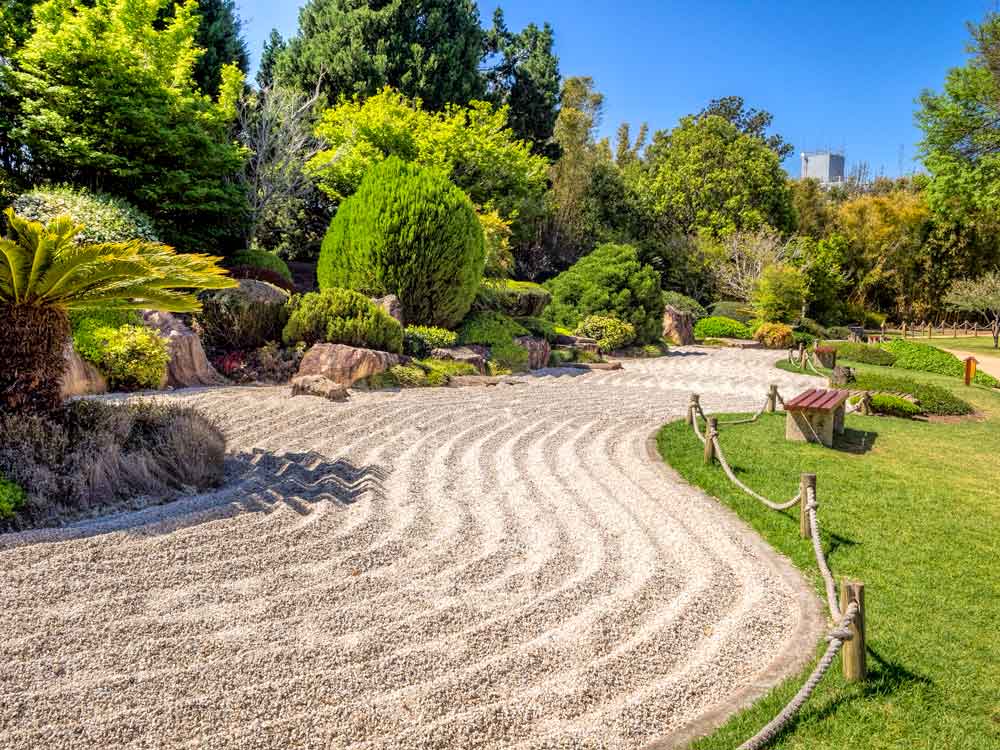Toowoomba is known as the garden city and the Ju Raku En Japanese garden in Toowoomba is one of the best examples in Australia. If you planning to head out to the city for a day trip from Brisbane or the Gold Coast, passing through on an outback road trip heading further inland or checking out the Carnival of Flowers held in the regional city every spring, then this garden is one you’ll want to see.

We love Japan and always include a variety of gardens on our travels over there, whether they’re public parks, private gardens or part of temple and castle complexes they have features in common that make them both beautiful and peaceful. These are some of our favourite gardens in Japan but there are stunning examples of the techniques and planting styles all around the world.
We enjoy visiting many of these international gardens on our travels and appreciate the unique interpretations of the style and how they are adapted for the different plants that thrive in ane area and climate while staying true to the design aesthetic.
Ju Raku En is one of the largest, most complex and traditionally designed Japanese gardens in Australia. We have visited at various times of the year and it has something unique to offer in each season but like many gardens, it is arguably at its best during the spring flowering and autumn leaf seasons.

It’s not always easy to pick your timing perfectly especially for something like the blossom season that only lasts for a couple of weeks but Toowoomba has distinct seasons unlike most of Queensland and you’ll usually hit the best of spring in mid to late September and the coloured leaves in April.
Features of the Japanese garden
The garden features many of the design techniques and aspects of typical Japanese gardens while at the same time incorporating Australian plants to bring seasonality to this little pocket of Queensland. There is a central lake, stream and waterfall, rocks and an island that features the ‘tea room’.
The island is accessed by a series of bridges, passing over the bridges represents the Buddhist symbolism of journeying to paradise. Paths wind all through the gardens past azalea hill, to the bench where the dry garden can be contemplated, the pagoda that in spring will be drenched in purple wisteria bloom and under the gently waving bamboo grove.

Like traditional Japanese gardens, Ju Raku En uses walls and borrowed scenery to create the illusion that the garden is bigger and more secluded than it is. Winding paths give the opportunity to explore rather than taking a single lap and within the 3-hectare site there are around 3km of pathways to enjoy if you completed all of the loops.
Who designed and maintains the garden?
The masterplan was created in Japan after extensive study of the site and took 9 years to design and build before it was opened to the public on the 21st April 1989. In the life cycle of Japanese gardens, it is still quite young but has matured beautifully creating a peaceful and contemplative space within its academic and suburban community.

The ‘Ju Raku En’ Japanese Gardens are a beautiful spot to spend an hour or two in Toowoomba. They were designed and named by renowned garden designer and master of the tea ceremony, Professor Kinsaku Nakane of Kyoto who was involved in the restoration and research of many classic gardens in the historic city and across Japan.
The name Ju Raku En can be loosely translated as to enjoy peace and longevity in a public space. It is a theme that Professor Nakane and the joint custodians of the garden, the Toowoomba City Council and the University of Southern Queensland (USQ), have stayed true to.
Where is the Toowoomba Japanese Garden?
The Toowoomba Japanese gardens are located inside the University of Southern Queensland grounds off West Street. If you follow the loop to the right at the end of the main avenue there is free public parking here and a large vermillion red gate marking the garden entrance.
The back entrance opens into the surrounding suburbs on Regent Street. You will find a good amount of street parking is available in the surrounding streets.
The map below shows many of the top attractions in Toowoomba including the Japanese Gardens.
Visitor information
Is there an entrance fee to the Japanese Garden in Toowoomba?
No, entry is free.
What are the opening hours?
The Japanese gardens in Toowoomba are open from 7 am to 7 pm daily.
What facilities are available in the garden?
The gardens are well-appointed making them an enjoyable spot to bring a picnic or book and stay for a while. There are picnic tables, shaded seating areas and toilet facilities are all available within the gardens. The lawns overlooking the pond are also open so you can spread out a picnic rug.
If you found this article useful please consider saving it to Pinterest. It makes it easy for you to find it again, it helps us, and it helps other travellers to find the information they are looking for.



Have you been to the Japanese garden in Toowoomba? Have you been to other Japanese style gardens outside of Japan that you’d recommend? We’d love to hear your suggestions in the comments below.
Izumi Kershaw
Thursday 4th of September 2014
Your photos are beautiful, love your posts!
twoaussietravellers@yahoo.com
Monday 22nd of September 2014
Thank you so much Izumi, I love taking photos and hope that to improve with a bit of regular practice.